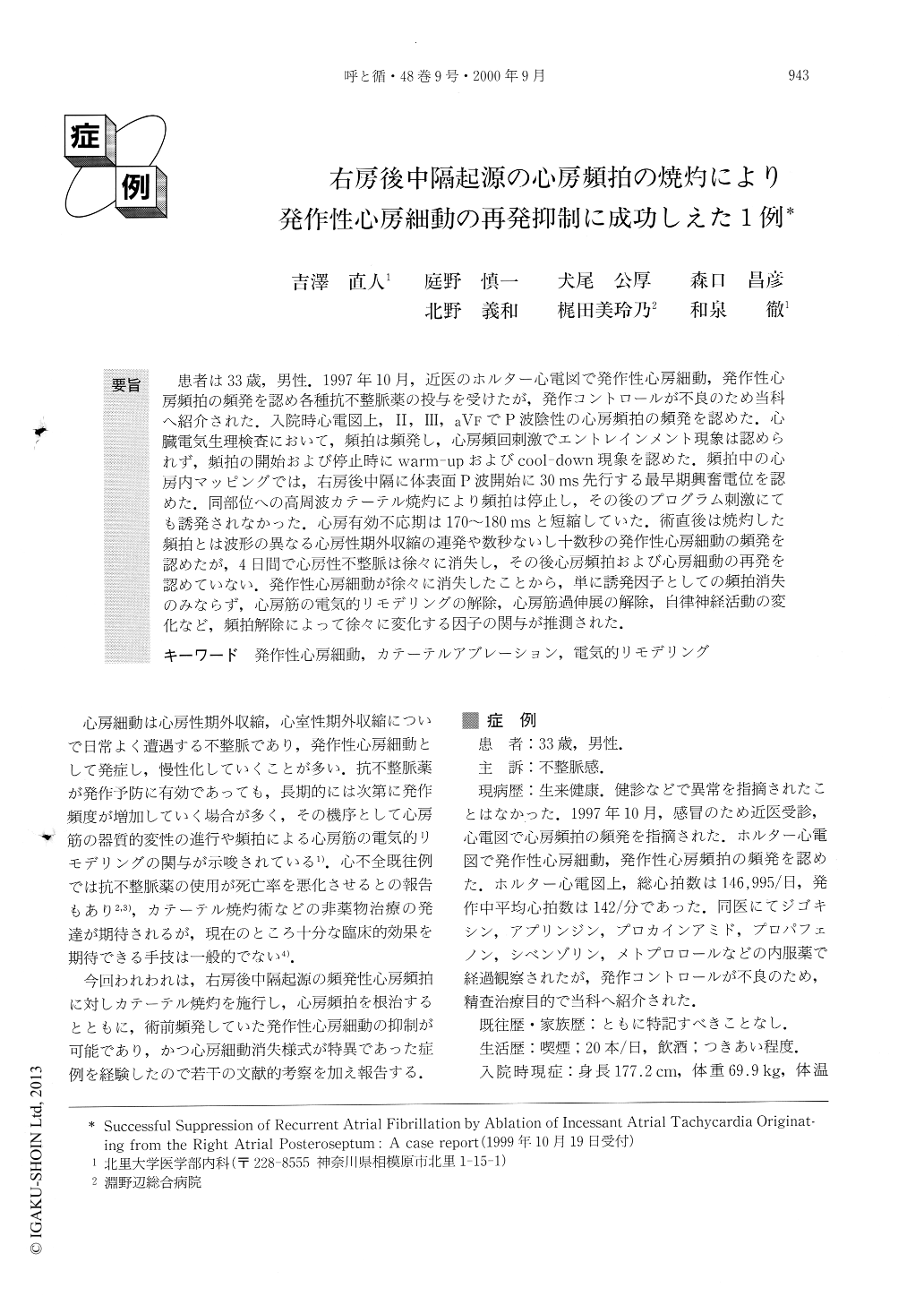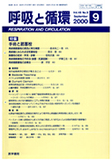Japanese
English
- 有料閲覧
- Abstract 文献概要
- 1ページ目 Look Inside
患者は33歳,男性.1997年10月,近医のホルター心電図で発作性心房細動,発作性心房頻拍の頻発を認め各種抗不整脈薬の投与を受けたが,発作コントロールが不良のため当科へ紹介された.入院時心電図上,II,III,aVFでP波陰性の心房頻拍の頻発を認めた.心臓電気生理検査において,頻拍は頻発し,心房頻回刺激でエントレインメント現象は認められず,頻拍の開始および停止時にwarm-upおよびcool-down現象を認めた.頻拍中の心房内マッピングでは,右房後中隔に体表面P波開始に30ms先行する最早期興奮電位を認めた.同部位への高周波カテーテル焼灼により頻拍は停止し,その後のプログラム刺激にても誘発されなかった.心房有効不応期は170〜180msと短縮していた.術直後は焼灼した頻拍とは波形の異なる心房性期外収縮の連発や数秒ないし十数秒の発作性心房細動の頻発を認めたが,4日間で心房性不整脈は徐々に消失し,その後心房頻拍および心房細動の再発を認めていない.発作性心房細動が徐々に消失したことから,単に誘発因子としての頻拍消失のみならず,心房筋の電気的リモデリングの解除,心房筋過伸展の解除,自律神経活動の変化など,頻拍解除によって徐々に変化する因子の関与が推測された.
The patient was a 33-year-old male. Frequent epi-sodes of paroxysmal atrial tachycardia (PAT) andparoxysmal atrial fibrillation (PAf) were documentedin the Holter monitoring. Several antiarrhythmic drugsfailed to prevent the tachycardias, so the patient cameto our hospital to undergo catheter ablation. In theelectrophysiologic study, incessant PAT was observed.Although the entrainment phenomenon was not obser-ved during rapid atrial pacing, warm-up and cool-downphenomenon was observed in recorded PAT episodes.The earliest activation during PAT was observed at theposterior atrial septum and the atrial activation at thatsite preceded the onset of the P wave by 30 msec.Catheter ablation performed at that site successfullyterminated the tachycardia and the tachycardia couldno longer be induced. The atrial effective refractoryperiod was shortened to 170~180 msec immediatelyafter the procedure. After the ablation procedure, noPAT was observed in ECG monitoring but spontaneousPAf of short duration did occur. However, the frequencyof PAf episodes decreased gradually during the follow-ing 4 days, until it disappeared completely on the 5thday. Release from the electrical remodeling caused byfrequent PAT was a possible mechanism to explain thegradual disappearance of PAf after the ablation proce-dure.

Copyright © 2000, Igaku-Shoin Ltd. All rights reserved.


